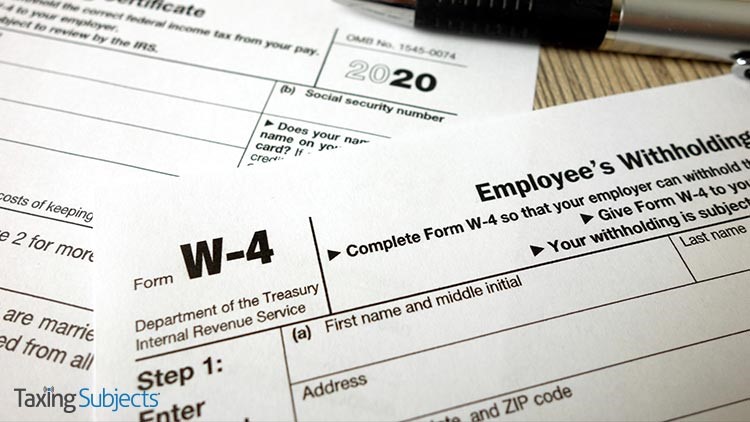New Withholding Process Made Official

The Treasury Department and the Internal Revenue Service have issued their proposed regulations updating the federal income tax withholding rules, bringing them in line with the changes made by the Tax Cuts and Jobs Act.
The regulations have been published in the Federal Register.
In general, the regulations are designed to usher the revamped Form W-4, Employee’s Withholding Certificate, into use starting this year. Also slated for launch are the related tables and computation procedures in Publication 15-T, Federal Income Tax Withholding Methods.
The changes in withholding also carry some good news for workers, however. The new regulations don’t require employees to fill out a new Form W-4 just because the form’s been redesigned. Employees with a W-4 already on file with their employer prior to 2020 generally can continue to have their withholding determined based on the old form.
The Wheel, Reinvented
The redesigned Form W-4 no longer uses a worker’s marital status and withholding allowances, which were tied to the value of the personal exemption. The new tax law basically did away with personal exemptions.
Instead, withholding with the new Form W-4 will generally be based on the employee’s expected filing status and standard deduction for the year.
Another feature of the new W-4, the IRS says, is that it’s redesigned to make it easier to figure the correct amount of withholding for those employees who hold down more than one job at a time, or for married employees who file jointly with their working spouse.
Also new is the ability for employees to have itemized deductions, the child tax credit and other tax benefits reflected in their withholding for the year. The ability to have one’s employer withhold an extra flat-dollar amount each pay period still exists. This is handy when the taxpayer has income from other sources that are not subject to withholding. But the new W-4 offers taxpayers an option.
Employees who have outside income that’s not subject to withholding can now use the new W-4 to request their withholding employer to set aside additional tax to account for the other sources. This could ease the worry over a nasty tax-time surprise for those taxpayers.
Get Ahead of the Curve
The proposed regulations offer employees the use of an online Tax Withholding Estimator tool that can help them fill out the new Form W-4 accurately. Alternatively, employees can use the worksheets included in the instructions for Form W-4 and Publication 505, Tax Withholding and Estimated Tax, to help them in filling out the new form .
According to the IRS, the new form can also help address a number of other withholding ills. For example, the new procedures give employers flexibility in how they treat employees who don’t furnish a Form W-4.
“Starting in 2020, employers must treat new employees who fail to furnish a properly completed Form W-4 as single and withhold using the standard deduction and no other adjustments. Before 2020, employers in this situation were required to withhold as if the employee was single and claiming zero allowances,” the IRS states.
Some other rule changes are also significant. The new regulations lay out new rules on when employees have to furnish a new W-4 for changed circumstances; they also change the regulations for the lock-in letter program; and eliminate the combined income tax and FICA (Social Security and Medicare) tax withholding tables.
The Treasury Department and the IRS are taking public comment on the proposed regulations. Follow the link to the regulations for details. Updates on implementation of the changes can be found on the IRS’ Tax Reform Page online.



